Puglia
The southern Italian region of Puglia is surrounded for the most part by water, so it won’t surprise you to hear of its allure as a beach vacation destination – but Puglia also happens to be brimming in historic monuments and artifacts, too.
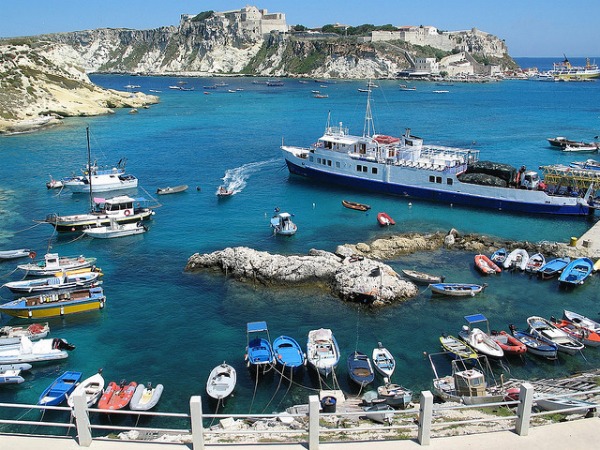
Puglia makes up the high heel of Italy’s boot – it juts out into the Ionian Sea and also has a long coastling on the Adriatic. Technically speaking, the region touches two additional bodies of water, too. Where the Adriatic meets the Ionian between Puglia and Albania is called the Strait of Otranto, and the instep of the Italian boot is the Gulf of Taranto. In other words, yes – this is a region very attuned to its coast.
Inland, however, Puglia is largely flat and arid – it’s primarily an agricultural region, responsible for producing much of the wheat used in Italy, as well as oats, vegetables, and wine grapes. Puglia also produces more olive oil than any other region in the country.
Puglia was inhabited as far back as 1,000 years B.C.E., and the archaeological riches that have been unearthed throughout the region make it exciting for more than just beach-loving visitors. It’s a region with much to offer to those who make the effort to get there.
On this page, you’ll find a basic overview of travel information for Puglia, including links to other parts of WhyGo Italy to help you plan your Puglia trip. If you have trouble finding what you’re looking for, please don’t hesitate to let me know.
 Quick links to Puglia travel resources:
Quick links to Puglia travel resources:
Puglia: Fast Facts
- The Italian name for the region is Puglia, and although this is also used commonly in English you may also see Apulia used to refer to this same area. The proper Italian name, Puglia, is pronounced POOL|yah.
- The capital city of Puglia is Bari (pronounced BAH|ree).
- There are two UNESCO World Heritage Sites in Puglia, both man-made. One is the 13th century Castel del Monte near Bari, and the other is a singular type of limestone structure called “trulli.” Trulli are found in several towns in southern Puglia, but the UNESCO Site is the town of Alberobello.
- In addition to the four bodies of water that touch Puglia’s coasts (Adriatic and Ionian Seas, Strait of Otranto and Gulf of Taranto), the region also borders the Italian regions of Molise, Campania, and Basilicata.
- The spur that protrudes from the boot’s ankle in northern Puglia is called the Gargano promontory.
- Famous people from Puglia include silent film star Rudolph Valentino, 17th century Pope Benedict XIII, footballers Antonio Cassano and Marco Materazzi, Italian singer-songwriter (he co-wrote “Volare”) Domenico Modugno, and 1960s Italian Prime Minister Aldo Moro.
- People from Puglia are called pugliesi (plural). The singular version is pugliese.
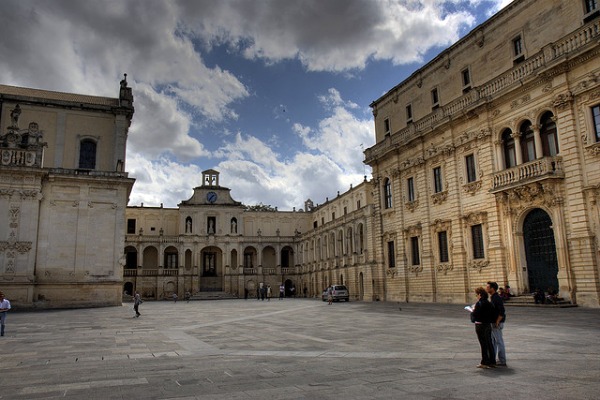
Where to Stay in Puglia
Puglia’s popularity as a beach destination means that there is no shortage of accommodation options along the coasts. During the high season, they’re more apt to be booked up (and more expensive), while in the shoulder seasons you’ll have more luck. And because Puglia is so far south, you can often experience warm enough weather during the winter to make a trip to the region’s beaches a good idea.
For anyone in search of more budget-friendly lodging than traditional hotels, don’t overlook the listings for hostels – many smaller family-run hotels are listed under hostels because of their cost rather than their rooms. Note that the rail network outside the major cities and towns in Puglia isn’t great, so if you plan to explore much you’ll need to rent a car or get to know the bus system instead.
Here are some links to articles about hotels and hostels in some of the cities in Puglia:
- Cheap Hotels in Bari
- Hostels in Bari
- Cheap Hotels in Brindisi
- Hostels in Brindisi
- Cheap Hotels in Lecce
- Hostels in Lecce
- Cheap Hotels in Taranto
- Hostels in Taranto
- Cheap Hotels in Foggia
- Hostels in Foggia
- Cheap Hotels in Ostuni
- Hostels in Ostuni
- Cheap Hotels in Gallipoli
- Hostels in Gallipoli
- Cheap Hotels in Otranto
- Hostels in Otranto
- Vacation Rentals in Puglia
- Agriturismo in Puglia
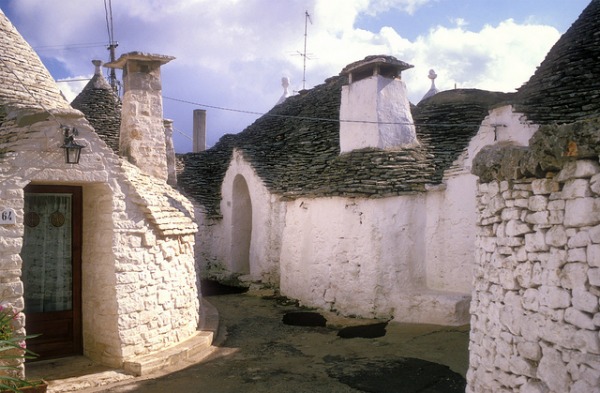
What to Do & See in Puglia
As has been mentioned a few times already, the beaches of Puglia are the region’s biggest tourism draw. There are beach resort towns lining the coast from the north where the spur pops out into the Adriatic, down around the heel on the Ionian Sea, and into the instep and the Gulf of Taranto. Plus, no matter where you are in the region, you’re never far from the water.
Aside from the beaches, Puglia is also famous for its history. The UNESCO-designated “trulli” are one of the region’s big attractions, and if you’re lucky you’ll even get to stay in a hotel or vacation rental that’s built in “trulli” fashion. There are Roman and Greek ruins in Puglia, castles and other buildings from many different centuries, picturesque medieval town centers, and artifacts archaeologists have found from several historic periods.
Thanks to its major port cities, Puglia is a popular jumping-off point for visits to other parts of the Mediterranean, including Albania, Greece, Montenegro, and Croatia.
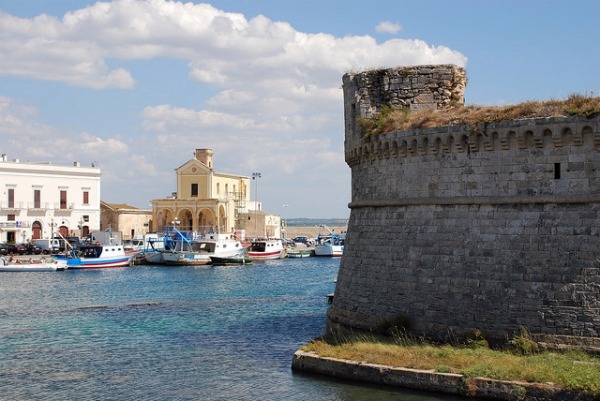
Where to Go in Puglia
Puglia’s larger cities and towns may be the most obvious on maps of the region, but each of the smaller towns along the long coastline have the potential to be an excellent base for a beach-centric holiday in Puglia. Even if you stay in a town that’s further inland, the region is narrow enough that you can still spend time at the beach by taking day trips to the coast that’s nearby.
Here are a few of the cities and towns of Puglia you might have on your list:
- Bari – Capital of Puglia, major port and economic center in southern Italy, home to 11th century basilica, 12th century cathedral, and 12th century castle
- Brindisi – Port and beach resort city in southern Puglia on Adriatic, home to 13th century and 15th century castles
- Lecce – Beautiful historic city in southern Puglia, home to 14th century church, 12th century cathedral, and ruins of a 2nd century Roman amphitheatre
- Taranto – City on the Gulf of Taranto in western Puglia, important port city, home to 15th century castle, a picturesque historic center, and ruins of 6th century B.C.E. Greek temple
- Alberobello – Small town near Bari, UNESCO-designated because of its “trulli” houses
- Gallipoli – Beach town on the Ionian Sea near tip of southern Puglia, home to 13th century Byzantine castle and historic old center
- Manfredonia – Beach town on the southern part of the Gargano promontory in northern Puglia, near Monte Gargano, home to a medieval castle
- Monopoli – Beach town on the Adriatic coast near Bari, originally a Greek settlement, home to an 11th century castle
- Ostuni – Beach town on the Adriatic coast near Bari, buildings painted mostly white, home to well-preserved ancient walls and a picturesque cathedral
- Otranto – Beach town on the Strait of Otranto near tip of southern Puglia, originally a Greek settlement, home to an 11th century cathedral and 13th century castle
- Tremiti Islands – Archipelagno off the northern coast of Puglia in the Adriatic, part of Gargano National Park
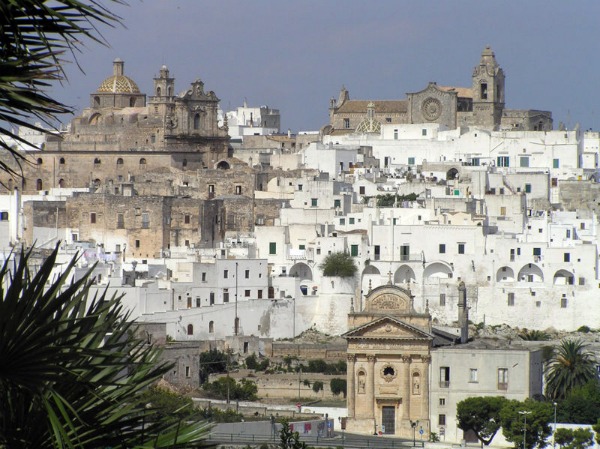
photos, top to bottom, by: Roby Ferrari, Otourly, kruder396, loriszecchinato, Yellow.Cat, Dronkitmaster